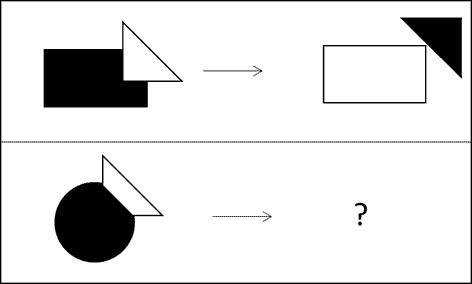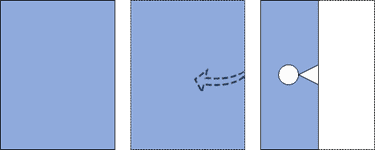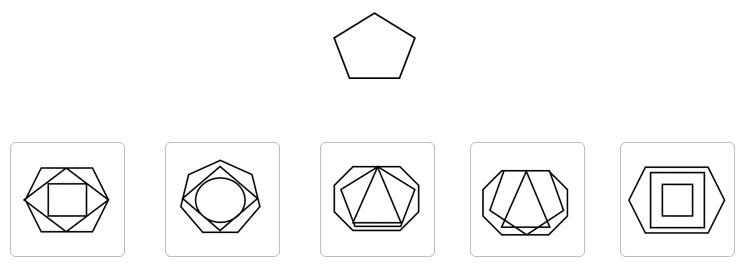CAT4 Level C [Year 6]: Overview, Samples & Practice Tests
Understanding the CAT4 Level C test is the first step toward your child’s success.
This important assessment reveals their unique strengths and areas where they can shine even brighter.
We’re here to help! In this guide, you’ll find everything you need to prepare your child for the exam, including an overview of the CAT4 Year 6 test format, sample questions, and practice resources.
Let’s get started!
What Is the CAT4 Level C Test?
The CAT4 Level C assesses verbal, non-verbal, mathematical, and spatial reasoning skills in Year 6 students (aged 9.5-11). This multiple-choice test measures academic potential and is used for entrance exams in many schools and programs.
The CAT4 was created by GL Assessment administered in a paper-based or online version and takes about two hours to complete.
Get these accurate CAT4 Level C practice tests to help maximize your child’s scores.
What Questions to Expect on the CAT4 Year 6 Test?
The exam consists of four subtests (also called batteries) that measure different cognitive abilities:
- Non-Verbal Battery: Evaluates problem-solving and critical-thinking skills.
- Verbal Battery: Tests students’ ability to understand and use language.
- Quantitative Battery: Assesses students’ mathematical abilities.
- Spatial Battery: Measures spatial perception and visualization skills.
Each battery includes two types of questions, resulting in a total of 8 question types on the test.
The exam has three parts, each with its own time limits and amount of questions:
Part 1
- Figure Classification: 24 questions, 10 minutes
- Figure Matrices: 24 questions, 10 minutes
Part 2
- Verbal Classification: 24 questions, 8 minutes
- Verbal Analogies: 24 questions, 8 minutes
- Number Analogies: 18 questions, 10 minutes
Part 3
- Number Series: 18 questions, 8 minutes
- Figure Analysis: 18 questions, 9 minutes
- Figure Recognition: 18 questions, 9 minutes
Free CAT4 Level C (Year 6) Practice Test
Try these CAT4 level C sample questions with your child to get a feel for the year 6 test. The questions are divided into four batteries, similar to the test, and resemble actual questions from the exam.
For more practice questions in addition to the ones below, visit this excellent test prep page.
Non-Verbal Reasoning Practice Questions
Figure Matrices Question
Choose the answer choice that follows the pattern and completes the matrix.


Correct Answer & Explanation:
The correct answer is the 2nd from the left.
As we move from left to right across the top row:
The basic shape (rectangle) stays in the same location inside the box and remains similar in size; however, the shape at the edge turns upside down. The corners of the shape (triangle) are touching the basic shape (rectangle).
But – the white and black shading is reversed.
The answer must have the same relationship as the left box in the bottom row.
The answer choices 1, 3, and 4 are eliminated in the first place as they do not follow the above rules. The answer choice 5 follows the basic rule but the white and black shading is not reversed which is contrary to the above rule applied in Figure 1.
The only answer choice which follows these rules is the 2nd.
Figure Classification Question
Choose the answer that shares the same connection/characteristic as the three given images.


Correct Answer & Explanation:
The correct answer is the 2nd from the left.
In this question, all three figures are triangles in various colors, each containing a yellow circle, a blue circle, and a red circle.
The only answer choice that is like this is the 2nd choice. The rest of the choices contain one circle that is the wrong color.
In the 1st choice, the yellow circle is replaced by a green circle. In the 3rd choice, the blue one is replaced by a purple one, the 4th choice has an orange circle instead of a red circle, and the 5th choice contains a maroon circle instead of the yellow one.
Therefore, the 2nd choice is the correct answer.
Verbal Reasoning Practice Questions
Verbal Analogy Question
The first pair of words go together in a certain way. Choose the word that goes together with the third word in the same way.
librarian → books : cartographer →
A. library
B. school
C. maps
D. travels
E. adventure
Correct Answer & Explanation:
The correct answer is (C) – maps. A librarian works with books. A cartographer works with maps. In this case, the first word (a person’s job) is paired with the item/object they work with (second word).
Verbal Classification Question
Choose the word that belongs in the same group as the first three words.
plant | fertilize | prune
A. bloom
B. flowers
C. garden
D. trim
E. gardener
Correct Answer & Explanation:
The correct answer is (D) – trim. Planting, fertilizing, pruning, and trimming are all things someone might do to a plant to help it thrive. Blooming is something the flower does on its own. Flowers are an item that might be planted, fertilized, pruned, or trimmed. The goal is to pick out verbs showing how plants or flowers might be nurtured. A gardener is someone who might perform these tasks.
Quantitative Reasoning Practice Questions
Number Analogy Question
Choose the number that completes the third pair so that it demonstrates the same relationship as the first two pairs.
[25 → 130] [40 → 205] [15 → ?]
A. 75
B. 300
C. 135
D. 80
E. 600
Correct Answer & Explanation:
The correct answer is (D) – 80.
In the pattern, the number on the right side of the arrow is obtained by multiplying the number on the left side by 5 and then adding 5 to the answer.
25 x 5 = 125+5 = 130, 40 x 5 = 200+5 = 205, 15 x 5 =75+5 = 80
Want to give your child the best chance for success? This comprehensive CAT4 Level C course provides even more practice and helpful strategies!
Number Series Question
What number comes next in the series?
6 7 8 11 14 15 16 19 22 ?
A. 23
B. 24
C. 25
D. 26
E. 27
Correct Answer & Explanation:
The correct answer is (A) – 23.
In the series, the next number is obtained by adding 1 in the first two turns and then by adding 3 in the next two turns to the previous number.
The same sequence is repeated subsequently. The sequence is 6+1=7, 7+1 = 8, 8+3=11, 11+3=14, 14+1=15, 15+1=16, 16+3=19, 19+3=22 and 22+1=23.
Spatial Ability Practice Questions
Figure Analysis Question
Choose the answer choice that shows the final product of the unfolded punched-in paper.


Correct Answer & Explanation:
The correct answer is the 3rd from the left.
A4 paper is folded from its right into half and is cut into a triangular form from its center, and a hole is punched by the top of the triangular cut. When it is unfolded, the paper will have a diamond-shaped cut at its center with two circular punches on both sides, as shown in option 3.
Figure Recognition Question
Choose the answer choice that contains the given shape. The shape must keep its size and orientation.

Correct Answer & Explanation:
The correct answer is the 3rd from the left.
The shape is visible in the middle of option 3.
Enhance Your Child’s CAT4 Level C Score with These Prep Resources
Finding the right preparation tools is crucial for CAT4 Level C success. While schools may have limited resources for dedicated test prep, external services can bridge the gap. Our top recommendation is TestPrep-Online. Here’s why:
- 18 Comprehensive Practice Tests: Mimic the real CAT4 with accurate question types.
- Detailed Explanations: Help students understand concepts and avoid future mistakes.
- Study Guides: Provide organized learning support and offer a well-rounded preparation experience.
Boost Confidence & Scores: Access 18 practice tests for targeted CAT4 Level C prep.
How the CAT4 Level C Results Work
The CAT4 scores are divided into several factors:
- Raw Score: This is simply the number of questions your child answers correctly on the test.
- Standard Age Score (SAS): This compares your child’s raw score to others in their age group. The average score is set at 100, and it shows how your child performs relative to their peers.
- National Percentile Rank (NPR): NPR shows the percentage of students in the same age group who scored lower than your child. For example, an NPR of 80 means your child scored higher than 80% of their peers.
- Stanines (ST): This divides scores into nine bands (1 being lowest, 9 being highest). Stanines give a broader sense of your child’s overall performance
What Is a Good Score on the CAT4 Year 6 Test?
The average standardized score on the test is 100, with scores ranging from 40 to 160. Anything above 111, or in Stanines 7-9, is considered a good score and may indicate your child has above-average cognitive abilities.
11 Actionable Tips for CAT4 Level C Success
- Familiarize Yourself with the Format: Go beyond knowing the sections. Look up sample questions for each test type to understand the question styles and difficulty level your child will face.
- Create a Realistic Study Plan: Instead of just “study hours,” break tasks into smaller chunks (e.g., 30 minutes of verbal practice, and 15 minutes of reviewing math concepts). This makes it less overwhelming.
- Targeted Practice with Quality Materials: Use practice tests replicating the CAT4 format. Focus on ones that provide detailed answer explanations for better learning.
- Identify Weak Areas for Focused Improvement: Analyze practice test results with your child. Instead of just knowing a low score in a section, identify specific question types causing trouble.
- Schedule Brain Breaks: 10-minute breaks in between study blocks are crucial for focus. Suggest active breaks like jumping jacks or a short walk around the block.
- Positive Reinforcement: Celebrate small wins (completing a tough section, mastering a concept). Specific praise is more effective than general “you’re doing great.”
- Build a Supportive Environment: Minimize negativity; offer support if they get frustrated. Turn it into a problem-solving exercise instead (“That was a tricky question, let’s see why…”)
- Reading Beyond the Classroom: Encourage reading for pleasure! Find topics your child is interested in – fiction, non-fiction, or even graphic novels all build vocabulary and comprehension.
- Flashcards with a Twist: Have your child create their own flashcards. The act of writing and selecting information aids memory better than just using pre-made ones.
- Visual Learning for Tough Concepts: Search for short videos on subjects your child struggles with (e.g., multiplying fractions). A different way of explaining can make it click!
- Time Management Practice: During practice tests, teach your child to keep an eye on the clock. Help them develop strategies for difficult questions (should they skip and return, etc.).
Conclusion and Additional CAT4 Guides
The CAT4 Level C test is a significant assessment that helps measure a student’s cognitive abilities. It can be a challenging test, but your child can perform well with proper preparation, practice, and a positive mindset.
We hope this article has provided you with a useful overview of the CAT4 Level C test and some helpful tips, samples, and practice tests to help your child excel. Remember, it is essential to support your child’s love of learning and help them develop the skills they need to achieve their academic goals.
More CAT4 Test Guides on Our Site:
- 18 Accurate CAT4 Level C Practice Tests
- Free Practice Test for CAT4
- CAT4 Level X [Year 2]
- CAT4 Level A [Year 4]
- CAT4 Level B [Year 5]
- CAT4 Level D [Year 7]
- CAT4 Level E [Year 8]
- CAT4 Level F [Year 9 & Year 10]
- CAT4 Level G [Year 11+]
- How to Prepare for the CAT4 Test
- CAT4 Test Results Explained
- CAT4 Age Levels Explained
